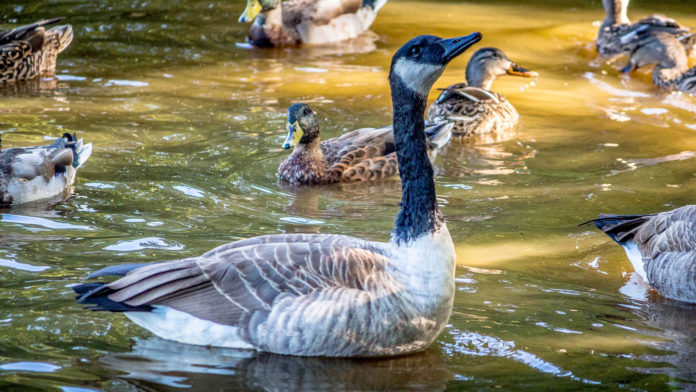Avian influenza is an infectious disease that can decimate the poultry industry. While many birds, including wild waterfowl like ducks and geese, can show no symptoms at all, it is highly contagious and can be rapidly fatal. In severe outbreaks, where a mutation sparks a highly pathogenic strain, the mortality rate can approach 100 percent.
Although the risk to human health is low, there is potential for simultaneous infection with human and avian influenza, which could allow gene exchange that could breed a new influenza virus subtype: a new virus that would have global pandemic potential.
Early virus detection and characterization can help contain an outbreak, but until now diagnostic tests were limited to finding and testing dead birds. This was tedious work that failed to predict the 2014-2015 avian influenza outbreak in British Columbia. Around 240,000 birds died in that outbreak, either from disease or culling to prevent its spread, estimated at a cost of three billion dollars.
To avoid similar future outbreaks, researchers at the Ministry of Agriculture, BC Centre for Disease Control Public Health Laboratory, and University of British Columbia collaborated to find a new way to assess population levels of avian influenza activity. Their genome-based molecular approach bypasses diagnosing individual birds by testing wetland sediment instead.
Wild waterfowl that live in these areas are a known reservoir for avian influenza. They can be infected without showing symptoms, but they can also spread the disease widely as they migrate. Infected birds shed viral material in their feces, which end up in the surrounding wetland sediment.
The sediment samples contain a lot of compounds from a lot of organisms, which can include viral sequences from avian influenza. To boost the signal, specific viral RNA sequences are targeted by magnetic probes that can then be collected and amplified. The samples can be used to quantify how much avian influenza activity there is in the area, and can also be compared against the viral genomes of other known avian influenza strains to better understand how dangerous they may be.
This new method boasts up to 24 percent detection of avian influenza; testing individual birds came with less than 1 percent detection.
New funding from partners at Genome BC, the Canadian Food Inspection Agency, and the Sustainable Poultry Farming Group will help implement this environmental monitoring strategy nationally, and perhaps expand it to include other wildlife-associated infectious diseases.








































